
Getty Images
Home, sweet home became home, still home over the past year-plus of the COVID-19 pandemic. Home is where we hunkered down, and faced massive upheavals to our routines.
Maybe the biggest change is what home came to mean to many people—office, gym, school, restaurant, bar, movie theater, and farm stand, all in one.
And the home adjusted to accommodate all these new demands on its spaces. Here’s a roundup of all the pandemic-related changes we’ve seen over the past year that are here to stay.
1. Real home offices
“When we first went into lockdown, it was a big transition for most of our team,” says Courtney Stables at Custom Neon.
For many, working from home initially simply meant finding a surface for a laptop. For Stables, the spare bedroom became a makeshift home office space.
“It was cramped and cluttered,” she says. But the space transformed over the year.
The dining chair that wasn’t designed for eight hours of daily sitting was replaced with an ergonomic office chair, and Stables purchased a real desk to replace a camping table.
“Now it just seems crazy not to have an office space in the home,” says Stables. “It’s a place in my home that’s there to stay, and an office will be something I’ll keep in mind when looking at other properties.”
2. The rise of the ‘cloffice’
But not everyone has the room for a dedicated home office. The “cloffice” (aka a closet transformed into an office) was the perfect solution.
“It’s small and compact enough to hold a work area that can be really efficient,” says Mark Cutler of Los Angeles’ Mark Cutler Design.
And now that we’ve discovered the cloffice, many people may be loath to give it up.
“Even if you’re not working from home in the traditional sense, it’s great to have a centralized space to check email, pay bills, and do some light filing, all with the added benefit of being able to close a door and walk away,” says Cutler.
3. Victory gardens
Last year, panic buying hit toilet paper, disinfectant—and seeds. Homebound people desperate to get outdoors, on the safety of their own property, began digging and planting. Soon victory gardens sprouted from sea to shining sea.
“Before the pandemic, I traveled on a nearly weekly basis for work and didn’t have the capacity for something as time-consuming as tending to a garden,” says Toni Okamoto, cookbook author and founder and content director of Plant-Based on a Budget. “Now, I can’t imagine not having an intimate connection to our yard and the food that’s grown in it.”
4. The indoor plant craze
Those gardens did not simply stay outside. Instead, indoor plants overtook many a home.
“I feel the houseplant craze was under way before the pandemic hit, and then with the stay-home orders, collections of plants were expanded,” says Lisa Steinkopf, author of “Houseplant Party: Fun Projects and Growing Tips for Epic Indoor Plants.”
If you were lonely during the past year, plants gave us something living to talk to, fuss over, and love.
“Plants are here to stay, because during the pandemic the people who became plant parents now love their plants,” says Steinkopf. “Plants have become their babies.”
5. Closing off open floor plans
Having your family around is wonderful. But the pandemic showed us that having your family around all. the. time—well, let’s just say that was an interesting social experiment. So it was little wonder that people began putting up walls in their previously open-concept homes, creating more traditional—and private—spaces.
“I’ve always felt that the large, open-plan homes ignore basic ideas of how a family really lives,” says Cutler. “Each family member has different agendas, whether it’s cooking, studying, relaxing, or watching TV.”
And these activities are best served in their own space.
“Now that people have experienced how a home can function with broken-up spaces that don’t feel isolating, I think we’ll see it stay that way,” says Cutler.
6. Supersized outdoor spaces
All that time indoors made many of us want to spend more time outdoors gardening, relaxing, and entertaining.
“People built outdoor spaces that included kitchens, dining rooms, and living rooms with fireplaces,” says Sunny Wroten, head of homebuilding at Atmos.
More space outside allowed homeowners to easily entertain family and friends safely.
“We’ve seen a sharp increase of home buyers with front porches on their wish lists,” adds Susan Moguel, marketing director at Arden, a residential agrihood community in Palm Beach County. “I believe that this trend will be sure to last. After all, once we see the added benefits these spaces bring to our lifestyles, it will be difficult to go back.”
7. Hard-working kitchens
The pandemic saw kitchens everywhere getting the workout of a lifetime. Breakfast, lunch, dinner, cocktail hour, and snacks. Repeat for a year.
And that constant use of the kitchen inspired many people to improve their cooking skills and make some upgrades to the space.
“Homes were renovated with better countertops, kitchen appliances, and other cooking devices,” says Thomas Vibe, co-founder and managing partner at Stone Wizards.
“My wife and I were once uber-busy executives who went out for meals and socialized almost seven days a week,” adds Baron Christopher Hanson, lead consultant and owner of RedBaronUSA.com.
But eating solely at home during the pandemic saw them rethink their appliance and home design priorities.
“It meant the need for more room for refrigerator-freezers, more pantry space, and even a second oven and stovetop,” Hanson says.
8. Dedicated sweat areas
“I’ve noticed this past year many people converting garages into gyms,” says Genesis Gutierrez, a licensed real estate agent and certified personal trainer based in California.
Other people decked out a basement or a spare room. But the result is the same: Many homes now have dedicated space as well as equipment for cardio and strength workouts.
“There will be people who will continue to go to the gym once they open back,” says Gutierrez. “Yet a large number have realized you can stay active without ever leaving home or paying for a gym membership.”
9. Hands-free everything
Although hands-free technology and appliances were around well before the pandemic, the fear of touching basically anything these past months kicked the tech into overdrive.
“After a year of prioritizing hygiene, today’s homeowners are looking for products that aid in the health and well-being of their families and lifestyles,” says Mary L. Cifuentes, Ferguson Bath, Kitchen and Lighting Gallery Northeast director in Lakewood, NJ.
As we move further into 2021, Cifuentes says we’ll see more smart lighting solutions, smart keyless locks, touchless faucets, touchless toilets, and knock-open dishwashers.
“Homeowners can choose from a variety of hands-free fixtures and voice-activated solutions to limit their potential exposure to viruses and bacteria throughout their home,” says Cifuentes.
10. Choosing the DYI route over in-person professional help

Getty Images
Yep, the pandemic forced homeowners to spend all their time at home—looking at their four walls and maybe thinking, “How can I improve this space?”
“Issues that people may have otherwise ignored while spending less time at home became glaring and unavoidable during the pandemic,” says Cara Newhart, an interior designer and host of the podcast “Make Space.”
And with the mandate to stay away from people, including contractors, many folks chose the DYI route to upgrade their homes. Along the way, we learned that DIY projects are an easy way to transform our spaces affordably—and allowed us a creative outlet as well.
“A lot of people have seen the benefit of simple and effective DIY projects, and they’re willing to stick to them,” adds Newhart.
11. Mudroom makeovers
A trend that evolved as a result of the pandemic involved an often-overlooked space: the mudroom.
“It’s typically thought of only as the place where we remove and store coats and shoes,” says Cifuentes.
Over the past year, though, many homeowners elevated the mudroom by making it ultrafunctional. To avoid germs coming into the home, some homeowners added a washer/dryer and utility sink to make the mudroom a space to safely transition from the outside world into the privacy of their homes.
“With hygiene being top of mind, this may be a trend that stays long term as people strive to keep their homes as germ-free as possible,” says Cifuentes.
The post ‘Cloffices,’ Sweat Rooms, and DIY Determination: 11 Ways the Pandemic Changed Our Lives at Home Forever appeared first on Real Estate News & Insights | realtor.com®.
source https://www.realtor.com/news/trends/how-the-pandemic-changed-our-lives-at-home-forever/
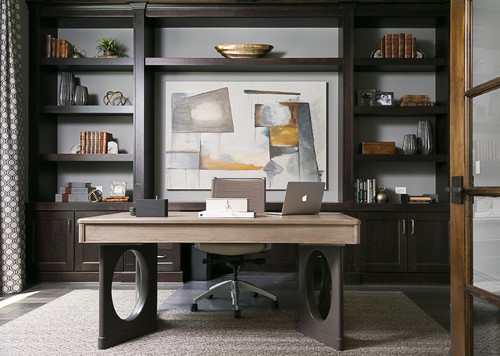
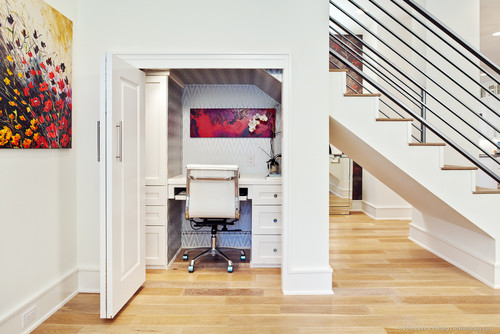

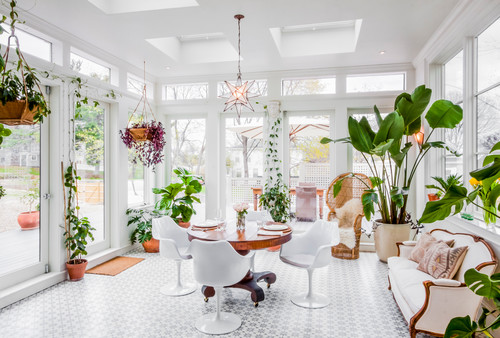
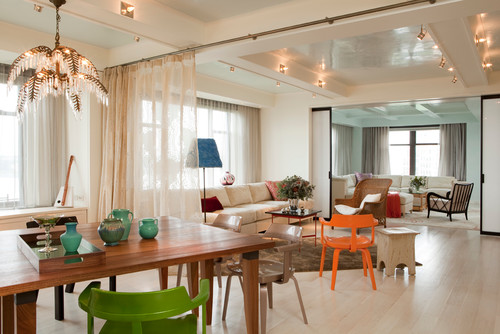

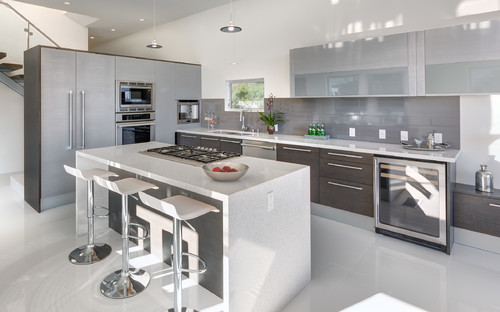
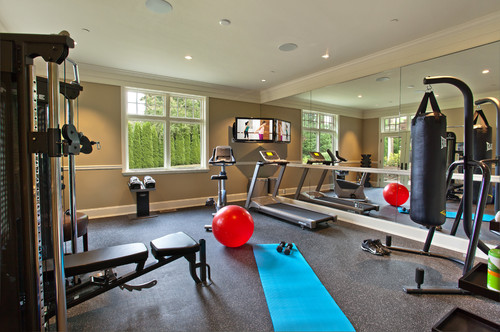

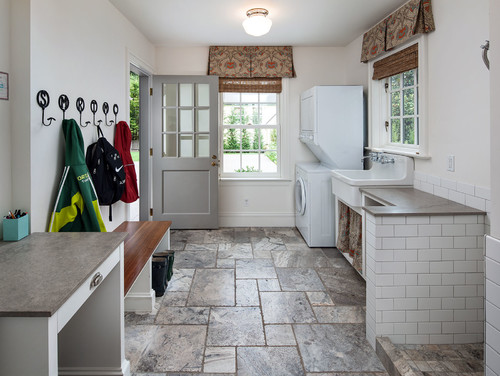
No comments:
Post a Comment